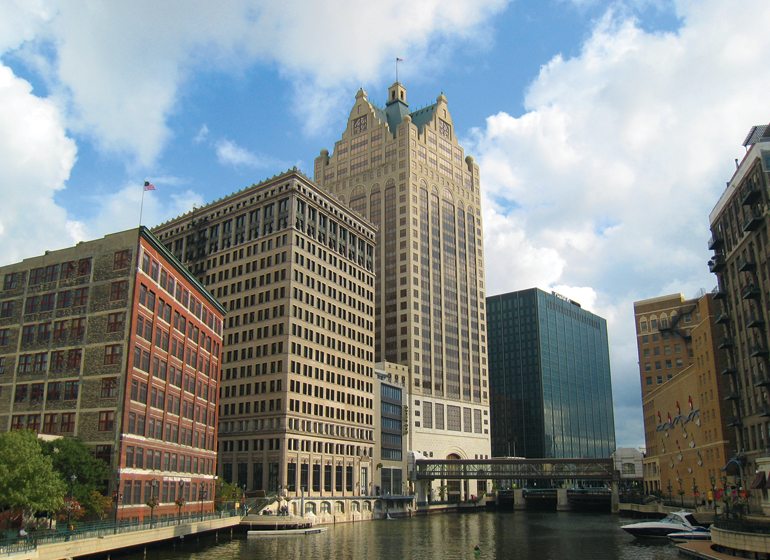The seven-county southeastern Wisconsin region has 47,000 businesses and a gross domestic product of more than $100 billion.
More than 60 percent of the region’s residents 25 years of age or older have attended college and 41 percent have earned an associate, bachelor’s or advanced degree. About 80,000 students currently attend a four-year college or university in the region and another 38,000 attend a two-year school.
Manufacturing companies provide employment for 15 percent of the southeastern Wisconsin workforce.
The Water Council, based at the Global Water Center in Milwaukee, has 180 members.
Wisconsin has 1,200 food and beverage manufacturers, ranking fifth in the nation and employing 67,000 people. Industry cluster organization FaB Wisconsin has 200 member companies.
Foreign-owned firms employ 30,000 workers in the metro Milwaukee area.
Wisconsin’s economy grew at a 3.2 percent annual rate in the third quarter of 2017, according to the latest data from the U.S. Department of Commerce.
Wisconsin’s unemployment rate was at 3 percent at the end of 2017, tying the previous low point reached in 1999.
Lending in the U.S. Small Business Administration’s 7(a) and 504 loan programs for fiscal 2017 in Wisconsin totaled $650.6 million for 1,503 loans.
General Mitchell International Airport in Milwaukee served 6.9 million passengers in 2017, an increase of 2.4 percent. Airlines added 12 new nonstop flights at MKE in 2017, bringing the total nonstop destinations to 49.
The Zoo Interchange in Milwaukee County, the busiest in Wisconsin, is being rebuilt and expanded at a cost of $1.7 billion.
The Amtrak Hiawatha service, connecting downtown Milwaukee to the Chicago Loop, had 829,000 riders in fiscal 2017, an increase of
2.6 percent.
A total of 2.6 million metric tons of cargo passed through Port Milwaukee during 2017, an increase of 5.4 percent. The number of vessel visits at the port rose 9.9 percent in 2017, to 301. Exports account for $15 billion of the region’s gross domestic product. Southeastern Wisconsin is one of 28 communities participating in the Global Cities Initiative.
Southeastern Wisconsin is part of Foreign Trade Zone 41. Administered by Port Milwaukee, it helps companies manage costs by delaying or reducing duty payments on foreign merchandise.
Wisconsin State Fair in West Allis had total attendance of 1,028,049 in 2017, a 1.2 percent increase.
Summerfest in Milwaukee had total attendance of 831,769 in 2017, a 3.4 percent increase. It was the 50th anniversary of the music festival.
Every year, more than 60,000 people attend conventions and business meetings in Milwaukee. The Wisconsin Center in downtown Milwaukee has 186,695 square feet of contiguous exhibit space. There are 2,100 hotel rooms within walking distance of the convention center campus.
The Milwaukee Art Museum has more than 1,500 works of art displayed on four floors.
More than 100,000 bikers are expected to attend Harley-Davidson’s 115th anniversary celebration in Milwaukee this fall.
Since its founding in 2005, the Milwaukee 7 regional economic development partnership’s work has resulted in the creation or retention of more than 14,500 jobs in the region
Milwaukee is located 90 miles north of Chicago, an hour-and-a-half drive.





